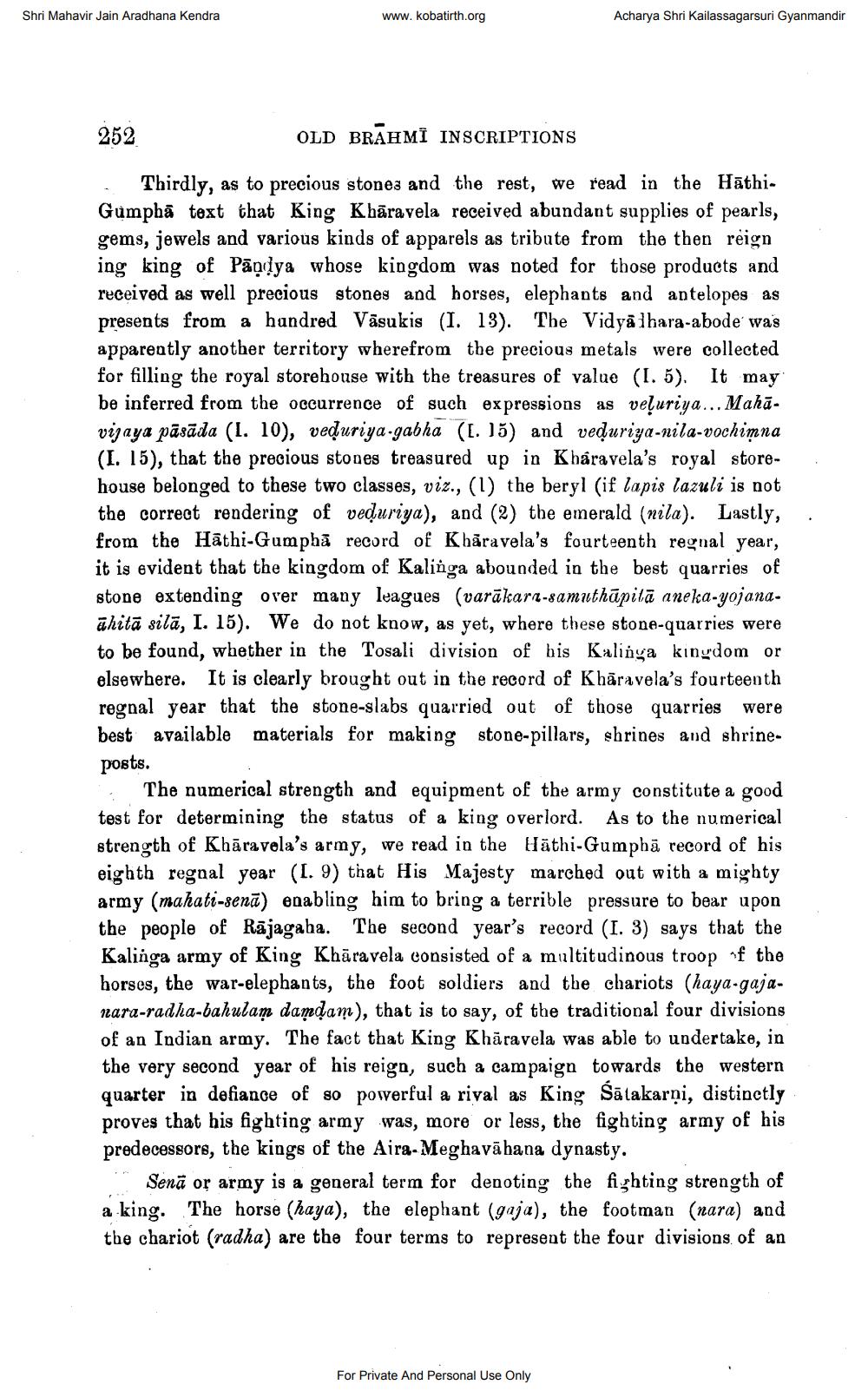________________
Shri Mahavir Jain Aradhana Kendra
www.kobatirth.org
Acharya Shri Kailassagarsuri Gyanmandir
252
OLD BRAHMI INSCRIPTIONS
Thirdly, as to precious stones and the rest, we read in the Hathi. Gumphā text that King Khāravela received abundant supplies of pearls, gems, jewels and various kinds of apparels as tribute from the then reign ing king of Pāṇdya whose kingdom was noted for those products and received as well precious stones and horses, elephants and antelopes as presents from a hundred Vasukis (I. 13). The Vidyalhara-abode was apparently another territory wherefrom the precious metals were collected for filling the royal storehouse with the treasures of value (1.5). It may be inferred from the occurrence of such expressions as veļuriya ... Mahā. vijaya pāsāda (l. 10), veďuriya.gabha (1. 15) and veduriya-nila-vochimna (I. 15), that the precious stones treasured up in Kháravela's royal storehouse belonged to these two classes, viz., (1) the beryl (if lapis lazuli is not the correct rendering of veduriya), and (2) the emerald (nila). Lastly, from the Hathi-Gumphā record of Khāravela's fourteenth regnal year, it is evident that the kingdom of Kalinga abounded in the best quarries of stone extending over many leagues (varākarn-samuthāpitā aneka-yojanaāhitā silā, I. 15). We do not know, as yet, where these stone-quarries were to be found, whether in the Tosali division of his Kalinya kinydom or elsewhere. It is clearly brought out in the record of Khāravela's fourteenth regnal year that the stone-slabs quarried out of those quarries were best available materials for making stone-pillars, shrines and shrineposts.
The numerical strength and equipment of the army constitute a good test for determining the status of a king overlord. As to the numerical strength of Khāravela's army, we read in the Hāthi-Gumphā record of his eighth regnal year (1.9) that His Majesty marched out with a mighty army (mahati-senā) enabling him to bring a terrible pressure to bear upon the people of Rājagaha. The second year's record (I. 3) says that the Kalinga army of King Khāravela consisted of a multitudinous troop of the horses, the war-elephants, the foot soldiers and the chariots (haya-gaja. nara-radha-bahulam damdam), that is to say, of the traditional four divisions of an Indian army. The fact that King Khāravela was able to undertake, in the very second year of his reign, such a campaign towards the western quarter in defiance of so powerful a rival as King Sālakarņi, distinctly proves that his fighting army was, more or less, the fighting army of his predecessors, the kings of the Aira-Meghavābana dynasty.
Senā or army is a general term for denoting the fighting strength of a king. The horse (haya), the elephant (gaja), the footman (nara) and the chariot (radha) are the four terms to represent the four divisions of an
For Private And Personal Use Only




